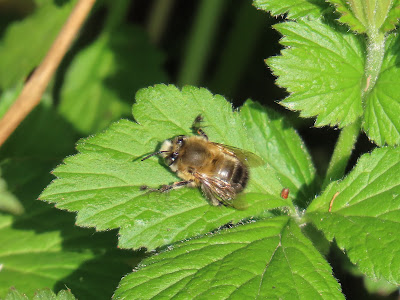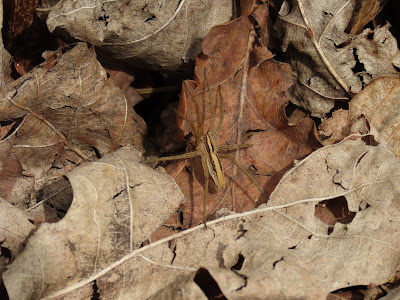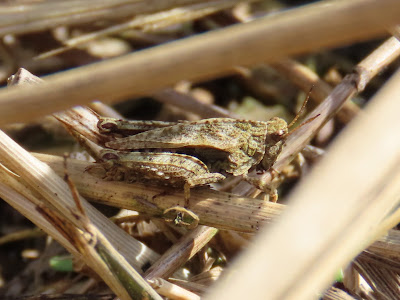Bullfinches are very distinctive birds if seen well, but they are quite shy and skulking in vegetation. Pairs often stay together. When individuals lose touch, one of them might perch in the open (top shot) calling. Their soft contact call, a mournful whistle, is the easiest way to detect them. Both sexes have a black cap, wings and tail, with a white wing band and white rump, and a silver back. Males have an orange-pink chest, whilst female's is brown. They have short and wide bills, reminiscent of a parrot's. Bullfinches feed on a range of vegetable foods, including seeds, which they extract from berries (including hawthorn, rowan and guelder rose) in the autumn and winter, flower seeds like dandelions and forget-me-nots, and buds in the spring. They will also visit bird feeders.
Female Bullfinch at bird table, Humber Bridge CP, 15/02/2016.
Bullfinches will also visit bird feeders. Here a male feeds on sunflower hearts, Sculcoates, 26/03/2023.
Status and distribution in Hull
Bullfinches are a scarce, but widespread resident species in Hull. They like old hedgerows and favour those along the disused railway lines (both Hornsea and Withernsea). They also like scrub and tangled banks with brambles, allotments and overgrown gardens. Good sites to watch them are the Sculcoates Cemetery, Noddle Hill, Foredyke Stream, and Rockford Fields.
A male Bullfinch feeding on bramble seeds, Stoneferry 09/01/2023
Female Bullfinch feeding on rowan seeds, 8/10/2024.
Feeding on green dandelion seed, Bridlington Avenue, 1/05/2023.
A Bullfinch fledgling at Noddle Hill, 22/06/2019.
Feeding on cherry buds, 28/03/2022.
Conservation and management
Bullfinch populations declined sharly in the early 70s. and declines continued until 2000, when populations started to rise and the species was downlisted to amber. Still, population size is about 50% what was in the early 70s. Agricultural intensification is suspected as contributing to the decline, but the causes are unclear. A regime of Hedgerow management more sensitive to wildlife should provide the food resources and breeding cover for the species.
More information


































































